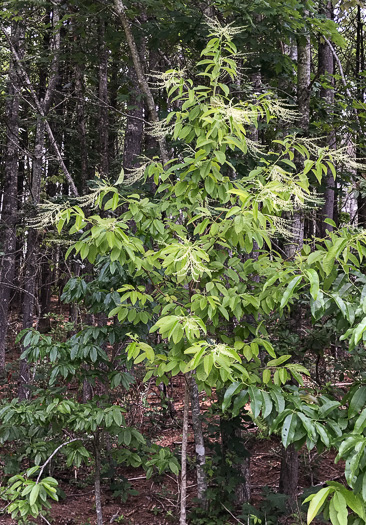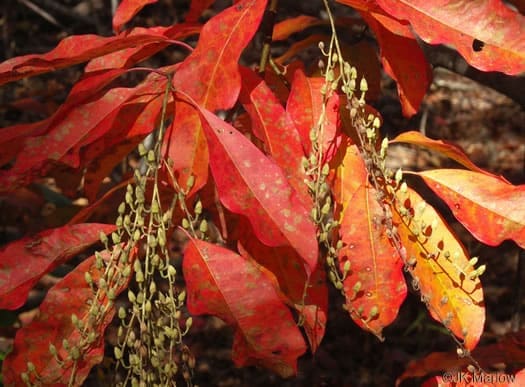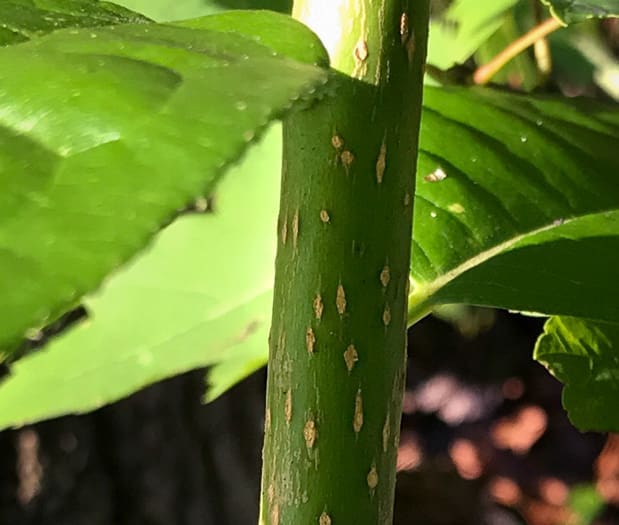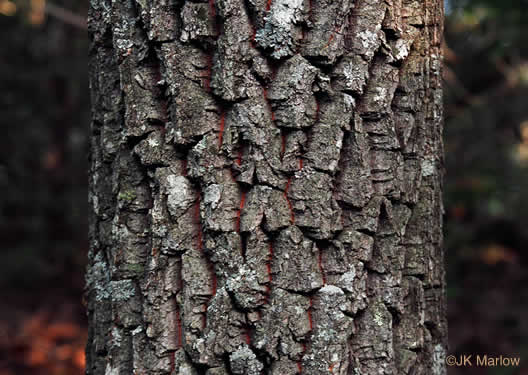Ericaceae
sourwood
Oxydendrum arboreum
Other Common Names
sorrel-tree
Plant Type
Large Tree (greater than 25 ft)
Life Cycle
Perennial
Typical Size
20-30 ft. tall
10-15 ft. wide
Tolerant of
Drought, Salt Exposure
Inolerant of
Poorly Drained Soil
Propagation
By seed, By cutting
Plant Propagation Notes
Use softwood cuttings with rooting hormone. No pretreatment is necessary for seed.
Plant Planting Notes
Provide up to 15 ft spacing.
Plants/Diseases
No significant disease or pest issues. Fall webworm, leaf spot, and twig blight are infrequent problems.
Wildlife Benefits
Nectar/pollen source for pollinating insects, Supports numerous caterpillars (bird food)
Leaves
Leaves alternate, elliptical, lanceolate, or oblong with serrate margins.
Flowers
White to cream or tan, bell-shaped, and fragrant on long panicles.
Fruit
Capsule.
Bark
New shoots are bright green with prominent lenticels. Older bark is dark gray with deep furrows and blocky
Toxicity
Mild toxicity if consumed in large quantities.
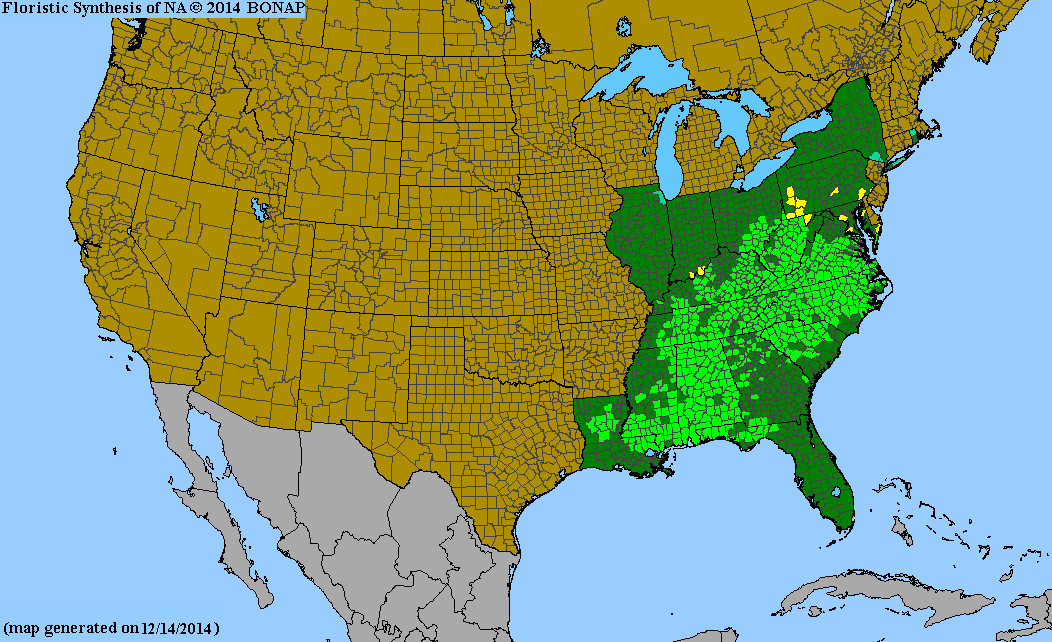
USDA Hardiness Zones
5, 6, 7, 8, 9
Light Exposure
Full Sun, Part Sun/Shade, Full Shade
Soil Moisture
Moist
Soil Drainage
Well-drained
Soil pH
Acidic (less than 6.0)
Native in South Carolina?
Yes
Plant Native Habitat
Oak-hickory and oak-pine forests with mesic or xeric soils and sandhill/pocosin ecotones.
Global Conservation Status (NatureServe)
Secure (G5)
Federal Conservation Status (USFWS)
Not Listed
Distribution Notes
Common throughout South Carolina.

